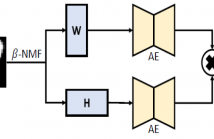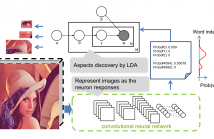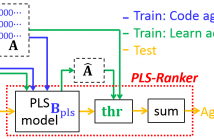- Virtual reality and 3D imaging
- Quality Assessment
- Haptic technology and interaction
- Hardware and software for multimedia systems
- Bio-inspired multimedia systems and signal processing
- Multimedia communications and networking
- Multimedia computing systems and applications
- Multimodal signal processing
- Multimedia security and content protection
- Multimedia human-machine interface and interaction
- Multimedia databases and digital libraries

- Read more about Scene Image Classification using ReducedVirtual Feature Representation in Sparse Framework
- Log in to post comments
- Categories:
 2 Views
2 Views- Read more about Demonstration of Rapid Frequency Selective Reconstruction for Image Resolution Enhancement
- Log in to post comments
- Categories:
 61 Views
61 Views- Read more about Scaled Fixed-Point Frequency Selective Extrapolation for Fast Image Error Concealment
- Log in to post comments
- Categories:
 10 Views
10 Views- Read more about Granularity-Based Interactive Image Display
- Log in to post comments
This paper presents a prototype system that assists users in accessing an unstructured image set (e.g., search results of a query). The system provides a spectrum of overviews, each of which is determined by the display granularity (i.e., the level of summary) an user desires. This new functionality enables a new granularity-based interactive image browsing experience.
- Categories:
 245 Views
245 Views
- Read more about A HIERARCHICAL APPROACH TO EVENT DISCOVERY FROM SINGLE IMAGES USING MIL FRAMEWORK
- Log in to post comments
In this poster, we propose to face the problem of event detection from single images, by exploiting both background information often containing revealing contextual clues and details, which are salient for recognizing the event. Such details are visual objects critical to understand the underlying event depicted in the image and were recently defined in the literature as ”event-saliency”. Adopting the Multiple-Instance Learning (MIL) paradigm we propose a hierarchical approach analyzing first the entire picture and then refining the decision on the basis of the event-salient objects.
- Categories:
 12 Views
12 Views
- Read more about A Hierarchical Approach to Event Discovery from Single Images using MIL Framework
- Log in to post comments
In this poster, we propose to face the problem of event detec/on from single
images, by exploi/ng both background informaAon oNen containing revealing
contextual clues and details, which are salient for recognizing the event. Such
details are visual objects criAcal to understand the underlying event depicted in
the image and were recently defined in the literature as ”event-saliency”.
Adop/ng the MulAple-Instance Learning (MIL) paradigm we propose a
hierarchical approach analyzing first the en/re picture and then refining the
- Categories:
 11 Views
11 Views
- Read more about TRACKING HIERARCHICAL STRUCTURE OF WEB VIDEO GROUPS BASED ON SALIENT KEYWORD MATCHING INCLUDING SEMANTIC BROADNESS ESTIMATION
- Log in to post comments
This paper presents a novel method to track the hierarchical structure of Web video groups on the basis of salient keyword matching including semantic broadness estimation. To the best of our knowledge, this paper is the first work to perform extraction and tracking of the hierarchical structure simultaneously. Specifically, the proposed method first extracts the hierarchical structure of Web video groups and salient keywords of them on the basis of an improved scheme of our previously reported method.
- Categories:
 23 Views
23 Views
Nowadays, with the success and fast growth of social media communities and mobile devices, people are encouraged to share their multimedia data online. Analyzing and summarizing data into useful information thus becomes increasingly important. For on- line photo sharing services like Flickr, when users are uploading a batch of daily photos at a time, the tags users provided tend to be rather vague, containing only a small amount of information.
- Categories:
 16 Views
16 Views
- Read more about Discriminant Correlation Analysis for Feature Level Fusion with Application to Multimodal Biometrics
- Log in to post comments
In this paper, we present Discriminant Correlation Analysis (DCA), a feature level fusion technique that incorporates the class associations in correlation analysis of the feature sets. DCA performs an effective feature fusion by maximizing the pair-wise correlations across the two feature sets, and at the same time, eliminating the between-class correlations and restricting the correlations to be within classes.
- Categories:
 119 Views
119 Views